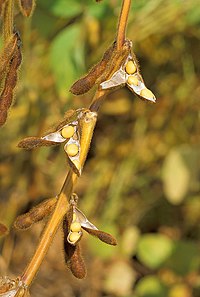
Factors associated with bicycle use for commuting and for leisure among Brazilian workers
Sign Up to like & getrecommendations! Published in 2017 at "Sport Sciences for Health"
DOI: 10.1007/s11332-017-0350-0
Abstract: PurposeThis study aimed to estimate the prevalence of cycling for commuting and for leisure among Brazilian workers, and analysis possible differences in sociodemographic characteristics between the cycling in commuting and leisure.MethodsIt was performed a secondary… read more here.
Keywords: use; among brazilian; commuting leisure; leisure among ... See more keywords

Interrelationship simulations among Brazilian electric matrix sources
Sign Up to like & getrecommendations! Published in 2021 at "Electric Power Systems Research"
DOI: 10.1016/j.epsr.2020.107019
Abstract: Abstract Electricity in Brazil is mainly supplied by renewable sources. However, thermal sources are necessary to meet the demand in periods of climatic adversity. The research aimed to identify the existing relationships among Brazilian generating… read more here.
Keywords: electric matrix; matrix sources; interrelationship simulations; simulations among ... See more keywords

Biochemical profile, eating habits, and telomere length among Brazilian children and adolescents.
Sign Up to like & getrecommendations! Published in 2019 at "Nutrition"
DOI: 10.1016/j.nut.2019.110645
Abstract: OBJECTIVES Lifestyle, obesity, and eating habits are emerging as determinants for the instability of telomeres. The increase in childhood and adolescent obesity and the association of biochemical profiles and dietary components with telomere length (TL)… read more here.
Keywords: among brazilian; biochemical parameters; telomere length; children adolescents ... See more keywords

Coexistence of risk behaviors for being overweight among Brazilian adolescents.
Sign Up to like & getrecommendations! Published in 2017 at "Preventive medicine"
DOI: 10.1016/j.ypmed.2017.04.018
Abstract: This study aimed to evaluate the magnitude of and the factors associated with the coexistence of risk behaviors for being overweight among Brazilian adolescents. This is a cross-sectional study with a representative sample of adolescents… read more here.
Keywords: risk; coexistence risk; among brazilian; risk behaviors ... See more keywords

Changes in seminal parameters among Brazilian men between 1995 and 2018
Sign Up to like & getrecommendations! Published in 2020 at "Scientific Reports"
DOI: 10.1038/s41598-020-63468-9
Abstract: Aiming to investigate trends in seminal parameter values among Brazilian men between 1995 and 2018, we performed a retrospective analysis of spermograms of couples admitted for infertility testing at UNICAMP/Brazil. For the present study, only… read more here.
Keywords: 1995 2018; seminal parameters; among brazilian; brazilian men ... See more keywords

Use of Artificial Nipples Among Brazilian Infants and Associated Factors.
Sign Up to like & getrecommendations! Published in 2020 at "Journal of tropical pediatrics"
DOI: 10.1093/tropej/fmaa007
Abstract: Transversal study conducted in a Human Milk Bank to evaluate the factors associated with the use of artificial nipples (pacifier and/or nursing bottle) among Brazilian infants. Analyses were performed using the χ2 test and logistic… read more here.
Keywords: brazilian infants; among brazilian; use artificial; nipples among ... See more keywords

Reasons for never receiving a pap test among Brazilian women: National health survey.
Sign Up to like & getrecommendations! Published in 2021 at "Public health nursing"
DOI: 10.1111/phn.12942
Abstract: OBJECTIVE To identify reasons among Brazilian women for never having a Pap test. DESIGN We designed a cross-sectional study that used data from the National Health Survey. SAMPLE Two thousand four hundred and two women… read more here.
Keywords: test; among brazilian; brazilian women; national health ... See more keywords

Discontinuation of Health Interventions Among Brazilian Older Adults During the Covid-19 Pandemic: REMOBILIZE Study
Sign Up to like & getrecommendations! Published in 2022 at "International Journal of Health Services"
DOI: 10.1177/00207314221092354
Abstract: The objective of this study was to analyze changes in access to health interventions during the pandemic among Brazilian older adults and to investigate the factors associated with social and health inequalities. We conducted an… read more here.
Keywords: health; health interventions; older adults; among brazilian ... See more keywords

Child Abuse as a Predictor of Alcohol Consumption Among Brazilian University Students
Sign Up to like & getrecommendations! Published in 2019 at "Journal of Interpersonal Violence"
DOI: 10.1177/0886260516640775
Abstract: Alcohol use among university students has received considerate attention in recent years due to its serious consequences. There is insufficient data in terms of the relationship between child abuse history and future use of alcohol… read more here.
Keywords: alcohol consumption; among brazilian; child abuse; consumption ... See more keywords

Self-Justification Processes Related to Bullying Among Brazilian Adolescents: A Mixed Methods Study
Sign Up to like & getrecommendations! Published in 2019 at "Frontiers in Psychology"
DOI: 10.3389/fpsyg.2019.01086
Abstract: This study aims to investigate the associations between bullying and moral disengagement in a Brazilian sample, using a mixed method design. Two-thousand three hundred and thirty-four adolescents (11–19 years; 42.9% girls) answered self-report measures on… read more here.
Keywords: brazilian adolescents; among brazilian; self justification; disengagement ... See more keywords

Staphylococcus aureus and CA-MRSA Carriage among Brazilian Indians Living in Peri-Urban Areas and Remote Communities
Sign Up to like & getrecommendations! Published in 2023 at "Antibiotics"
DOI: 10.3390/antibiotics12050862
Abstract: The emergence of Community-associated methicillin-resistant Staphylococcus aureus (CA-MRSA) infections among indigenous populations has been reported. Usually, indigenous communities live in extreme poverty and are at risk of acquiring infections. In Brazil, healthcare inequality is observed… read more here.
Keywords: urban areas; among brazilian; staphylococcus aureus; carriage ... See more keywords